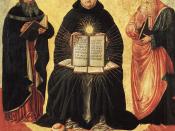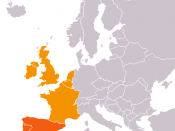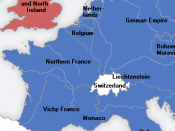Throughout the postclassical era, Western Europe experienced many commercial and cultural changes. The decline of the Roman Empire is what officially designated the beginning of the postclassical era, which began around 500 c.e, and it lasted until the 15th century. The postclassical era can be split into two different categories. One, from 500 c.e -900 c.e signifying the recovery period and two, 900 c.e to 1450 c.e which can be considered the advancing period due to the rapid growth from here onward.
The recovery period in Western Europe was not a very significant period for advancement. The population of Western Europe was actually just a large in the 6th century as it was in the 10th century. The decline of the Roman Empire left Western Europe in fragments and its intellectual life in ruins. This period was known as the dark ages because Western Europe was intellectually barren. People of the Middle East still considered Western Europeans as Barbarians at this time.
Muslims were also a big threat to Western Europeans up until 900 due to the threat of invasions. Another group of invaders that prolonged the west's weakness were the Vikings from Scandinavia. The only thing that held the west together was the Catholic Church because no significant government or economic forms were available. The Catholic Church almost exactly replicated the government of the Roman Empire.
In the 8th century a family by the name of the Carolingians began to take power over the royal house of the franks. One of the first Carolingians, Charles the Hammer, defeated the Muslims in the battle of Tours in 732. This defeat helped keep the Muslims out of Europe and into Spain, which would remain Muslim for many centuries. Another important Carolingian, Charlemagne, was crowned king in the west on Christmas...


